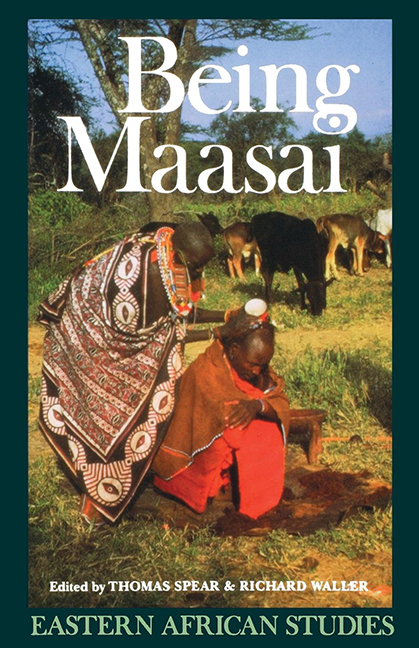II - Becoming Maasai: Introduction
Published online by Cambridge University Press: 30 August 2017
Summary
We open with a series of papers that provide an overview of Maasai history — how Maasai came to be ‘Maasai’. ‘Becoming Maasai’ was not a simple linear process, and attempts to project more recent definitions of what it is to be Maasai (i.e. definitions of ‘Maasainess’) backwards have only served to confuse the issue. At best, such accounts may tell us something of the history of what is now the dominant definition of'Maasainess', but often, because they fail to comprehend the essential ambiguities of ethnicity, they substitute simple (and simplistic) assertion for complex reality. The much debated non-issue of the identity of the so-called agricultural ‘Iloikop’ and of their relationship to ‘pure pastoral Maasai’ — the ‘real thing’ — is a case in point (see Spear, ‘Introduction’). Yet the pastoral ideal developed by the Maasai during and after the nineteenth century, and adopted by their defenders since, is a recent innovation which, as some of our contributors later argue, is now in a further process of revision. The Rift Valley and its adjacent highlands were always a far more confused and complicated place, characterized by great linguistic, social and economic diversity, in which ethnic pluralism and multi-lingualism have more commonly been the rule than the highly restrictive and prescriptive ethnicities which appear, questionably, to be the current pattern.
‘Becoming Maasai’ occurred in a series of stages in which definitions of what it meant to be Maasai, and therefore of who in fact was Maasai, changed radically in response to both internal and external pressures. We introduce the first two stages here, and foreshadow the next two. The history of early Maasai migration into the Rift would appear to be one of accommodation and adaptation, with successive groups establishing themselves beside, and intermixing with, existing populations to produce the palimpsest of pluralist communities noted in the ‘Introduction’. Many were probably economically diversified, mixing herding with grain cultivation and, perhaps, hunting and gathering, as Sutton's reconstruction of Maasailand before the ‘pastoral revolution’ indicates.
- Type
- Chapter
- Information
- Being MaasaiEthnicity and Identity in East Africa, pp. 19 - 24Publisher: Boydell & BrewerPrint publication year: 1993

